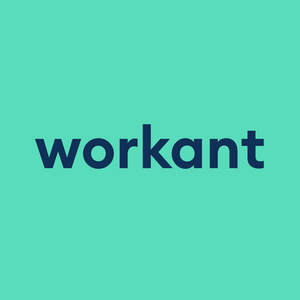Human resources, a field that’s been around since the early 1900s, has changed dramatically throughout the last decade. The industry continues to evolve and grow rapidly, trending toward systems governed by data-driven, analytical, and technological approaches to managing employees.
All great business owners recognize the importance of utilizing facts and figures to augment business understanding, but few grasp just how powerful HR analytics truly are. As the world consistently becomes more digital, it becomes increasingly important to keep up with the times by digitizing all of our business frameworks-even those that focus primarily on people, the living and breathing aspect of every company.
In this article, we will outline everything you need to know about HR analytics, including:
- The historical context
- The current state of the industry
- Why it should matter to you
- How to start building your own framework.
What are HR analytics?
In a nutshell, this term represents applying analytics approaches and techniques to employee data originating from a variety of sources. It helps to optimize all business activities related to your employees and subsequently improve processes/outcomes.
HR analytics involves collecting, measuring, organizing, and intentionally categorizing employee data and then strategically leveraging the resulting information to generate solutions, address workplace challenges, enhance operational output, and simply make better business decisions.
The history and evolution of HR
Although you could argue that the field of Human Resources has (in many ways) existed since the dawn of human history, the British industrial revolution marks the beginning of the development of what we now understand as modern HR.
Labor relations as a field began brewing in the 1860s. Trade unions and social responsibility movements developed in response to the Industrial Revolution. New inventions and Dr. Frederick Taylor’s philosophy, “Scientific Management,” emerged in the early 20th century, helping give rise to the first-ever HR teams and the “Personnel Management” trend.
The “Age of Compliance” followed, sprouting the National Labor Relations Act in 1935 and the Fair Labor Standards Act of 1938, allowing workplace safety movements to truly take center stage. The “Information Age” then marked the beginning of a long-lasting marriage between HR and technological data analytics, as data could finally be electronically stored.
In all the years since, HR has evolved so much that it would likely be unrecognizable to the founders of the industry, and thanks to the global explosion of technology, what we now call HR analytics has continued to become increasingly important.
The state of HR analytics today
Businesses must now understand the significance of developing proactive, innovative, and data-driven solutions based on employee well-being, rather than simply reacting to major problems or strategically tracking employee performance.
While HR analytics was previously used for more rudimentary purposes, such as evaluating goals and KPIs, it’s now a more holistic and intensely modernized aspect of the broader “digital HR” industry. It’s a field that allows us to continuously revolutionize our organizations, as it provides us with sprawling opportunities to leverage external and internal data and gain a deeper understanding that leads us to greatly improved decision-making processes.
Modern and forward-thinking technologies in the field not only automate procedures, enhance productivity, and provide a plethora of useful HR information but can also incorporate AI/HR software and predictive algorithms that greatly influence outcomes before they’re set in stone.
Entrepreneurs, small business owners, and CEOs who want to compete should use innovative HR software that consistently monitors, evaluates, and leverages HR data intelligently. You know how the saying goes… work smarter, not harder. This is more true now than ever before, as simply monitoring data, running analytics procedures manually, and reacting to trends won’t be enough to succeed within the current framework.
As a business owner, why should I prioritize this?
Your workforce is often the single most important aspect of your business. Understanding your employees as comprehensively as possible is essential to organizational success, no matter your specific business goals.
HR analytics processes give you essential information/invaluable business insights that allow you to better understand your team and make better, smarter, and more profitable business decisions across the board.
This tool provides opportunities to cultivate a healthy & positive workplace dynamic and increase employee satisfaction, in turn enhancing performance and company output.
HR analytics also help you eliminate some of the many uncertainties we face as business owners. It presents chances for proactive and innovative change and pushes your organization toward the future.
Especially in today’s global business culture, you must perform this task well in order to develop within the everchanging contemporary HR landscape, retain your employees, and compete with companies that are capitalizing on the current digital HR analytics context:
- According to Deloitte’s survey, the leveraging of employee data is becoming more and more prevalent; a whopping 74% of executives pinpointed digital HR as a top priority, 42% of companies are adapting & digitizing their current HR systems, and51% of companies are utilizing social networks to optimize recruiting processes.
HR analytics can’t be ignored. Data-driven decision-making is an inarguably transformative tool with massive long-term benefits, helping your company evolve faster and revolutionize its internal processes.
The main benefits of developing an HR analytics framework include…
- Increased employee satisfaction, engagement, and retention rates
- Improved company culture, workflow, and morale
- Optimized recruitment, training, feedback, and talent management programs
- Increased knowledge in many areas (allowing you to better predict/prevent future problems, make better decisions, and avoid costly mistakes)
- Augmented efficiency, performance, and organizational output
- Reduced costs and increased revenues
- Enhanced overall business success
How can I successfully build an HR analytics framework?
Although it might seem daunting to start this somewhat technical process, the journey of a thousand miles does, in fact, begin with a single step.
Start by researching, getting a feel for what successful companies in your industry are currently doing, or consulting with an expert on best practices within your field. Your general process should begin with data collection/organization and should “end” in the continuous implementation of the resulting acquired knowledge. But, you’ll need to utilize all your resources to develop a process tailored to your specific industry, business goals, and main priorities.
Reach out to us at Workant
If you aren’t an expert in HR analytics, you should consider an intelligently-designed HR software made for any business owner to enhance their organization’s success.
Try Workant’s automated software tool, which is free for the first 30 days and comes with an HR analytics mobile app. It allows you to centralize all your employee data, analyze productivity, track timelines and projects, monitor team well-being, and much more.
Contact us with any questions regarding HR analytics, best practices for incorporating HR software into your business plan, or our offer.

